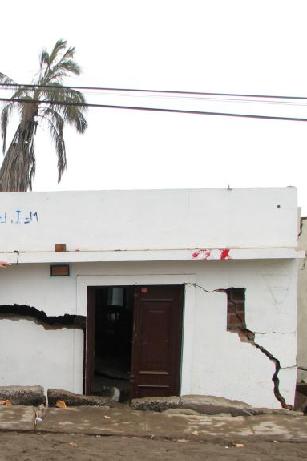In liquefaction process soil deposits behave as a viscous liquid rather than as a solid temporarily losing strength. Cohesionless soil deposits primarily sands and silts under seismic waves, primarily shear waves that pass through saturated granular layers, distort the granular structure, and cause loosely packed groups of particles to collapse. Disruptions to the particulate structure generated by these collapses cause transfer of load from grain-to-grain contacts in the soil to the interstitial pore water. This transfer of load increases pressure, in the pore water, causing drainage to occur. If drainage is restricted, a transient build up of pore-water pressure will occur. If the pore-water pressure rises to a level approaching the overburden pressure grain-to-grain contact stresses approach zero and the granular layer temporarily behaves as a viscous liquid rather than as a solid and liquefaction has occurred. In the liquefied condition, soil deformation: may occur with little shear resistance. Deformations large enough to cause damage to constructed works (usually more than 0.1 m) are called ground failure.
Looseness of the soil, the packing arrangement of soil grains, the amount of cementing between particles, and the amount of drainage restriction are factors that control the degree of liquefaction.

The amount of soil deformation following liquefaction depends on the looseness of the material, the thickness and areal extent of the liquefied layer, the ground slope, and the distribution of loads applied by buildings and other structures on the ground surface.

No comments:
Post a Comment